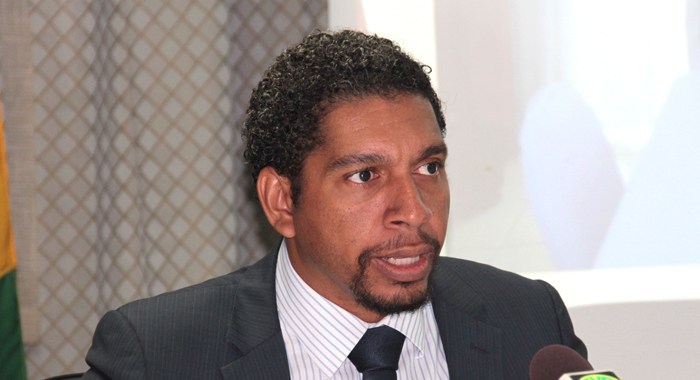Introduction
During the debate on the 2021 Budget in the Parliament, the Minister of Finance, Hon Camillo Gonsalves, presented what is unquestionably a budget crafted for the challenging times that our country is experiencing.
This week’s article would share some excerpts of the 2021 Budget presentation with particular focus on Agriculture, Fisheries and the Blue economy, Tourism and Poverty reduction.
Agriculture and fisheries and the blue economy
Despite COVID-19 related delays, the Government expects to construct and procure equipment for a modern arrowroot processing facility at Orange Hill in 2021. Half of the estimated $9.7 million for the arrowroot industry revitalisation project will be spent in 2021 – primarily on the assembly of the factory shell, purchase of machinery, improvement to the water supply and external works. As arrowroot has enjoyed a resurgence, our antiquated production facilities have not been sufficient to meet the quality standards befitting its new global status as a pure, high-end health food for adults and babies. Our arrowroot farmers and the crop they produce continue to be world-class; now, our production and packaging of the starch will be similarly top-notch. The Government of Saint Vincent and the Grenadines once again expresses its deepest gratitude to the Government and people of the Republic of India for their US$1 million contribution to the construction of the factory shell.
Budget 2021 also makes critical investments in modernisation and improved competitiveness in agriculture. $4.4 million will be spent across two projects to complete a food science laboratory at Arnos Vale, upgrade the packing facility at Langley Park and assist aggregators with business plans to help them find local and regional markets for Vincentian produce.
The Government will introduce a $1 million Fishing Development Project to expand our fishing fleet and provide capital to fishers willing to increase their capacity. With markets for our seafood growing exponentially, our challenge is not the availability of fish, but the capacity of fisherfolk to sustainably meet demand. The Fishing Development Project will provide low-interest loans for new vessels, help to refurbish existing boats, and supply necessary materials to help fisherfolk capture more seafood.
Budget 2021 also allocates a total of $1.5 million to accelerate the construction of the modern Barrouallie Blackfish Facility. While we have acquired and cleared the land and completed designs for the facility, COVID-19 complications prevented our Japanese partners and contractors from completing necessary site visits and mobilisation last year. We are optimistic that we will be able to welcome them to Saint Vincent and the Grenadines in 2021, and that work will commence to create a facility that will allow this specialty product to be caught and processed within the framework of our laws and regulations, and in accordance with the highest international standards.
The Government of Saint Vincent and the Grenadines is in discussions with the World Bank regarding the possibility of local and regional financing to facilitate a resilient, locally-controlled Blue Economy. Budget 2021 targets over $40 million in investments that touch and concern the Blue economy – from the modern port, to the expansion of fisheries, to coastal defences, to marine safety mechanisms. Private sector investments add tens of millions more to the total.
In 2021, the Government will collaborate with stakeholders on formulating comprehensive and forward-looking institutional arrangements to advance our important Blue Economy objectives. We are optimistic that we can also work successfully with our development partners and our fellow OECS members to mainstream a common approach to our vast ocean potential.
Tourism
Cumulatively, public and private investment in hotel construction on mainland St Vincent will exceed $740 million over the next three years.
Budget 2021 seeks to build upon these large scale investments with a number of capital projects designed to enhance SVG as a visitor-friendly destination with a uniquely Vincy vibe. Over $34 million of the Capital Budget is directly connected to tourism, a number that does not include planned improvements to airports in the Grenadines.
In addition to construction of the Holiday Inn and Marriott hotels, other tourism projects include $1.5 million to be spent on the Villa Boardwalk and a tourism facility, $1.2 million on sites and signage, including the majestic Chatoyer National Park.
The Government is under no illusions that tourism will rebound to full capacity in 2021. We were fortunate in 2020 that the Pandemic arrived at the tail end of our cyclical tourist season. We have no such luck in 2021.
Indeed, the 50,000 cruise passengers that visited us last January are all absent, and we will see nowhere near the 9,000 yacht passengers who arrived in the first month of 2020. Last January, we welcomed 92,000 visitors, overall. This January, we will be lucky to host one-tenth of that number.
Reducing poverty, protecting the vulnerable & combatting inequality
Over 7,400 primary school children depend on the school feeding programme in Saint Vincent and the Grenadines, 57% of the student body. In rural school districts, over 90% of students use the programmes.
Indeed, in eight of the 13 school districts of Saint Vincent and the Grenadines, more than two-thirds of students rely on the School Feeding Programme. At 7 primary schools nationwide – from Fancy to Mayreau – 100% of students eat the heavily subsidised nutritious meals. Those 7 schools have 915 students.
Last July, the leaders of UNICEF, the Food and Agricultural Organization, the World Food Programme and the World Health Organization issued a call to action, warning that the Pandemic and loss of school meals could force millions of children into acute malnutrition.
The challenge is immense, and Saint Vincent and the Grenadines is not immune.
Even in households where food insecurity is not an immediate danger, the economic impact of the school closures on vulnerable families is apparent. A balanced meal on our School Feeding Programme costs parents between $0.50 and $1.00. There is absolutely no way that parents can provide a similarly nutritious meal at a comparable cost at home.
Conclusion
Next week’s article would be the final part of this 2 part series that will examine other areas of focus in the 2021 Budget presentation of the Hon Minister of Finance, providing targeted information for the reading public.

